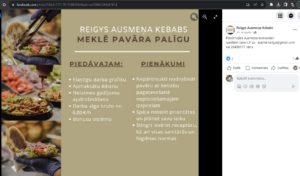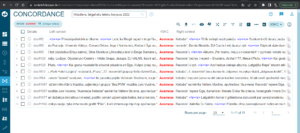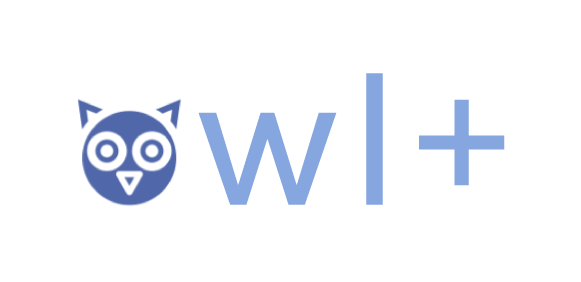17 Latgalīšu volūdys runuotuoji uorpus Latgolys / Latgalian speakers outside Latgale
I. Rēzekne – Reiga (Latgola – Latveja) 1. Saleidzynoj obejus attālus! 1.attāls 
2.attāls
 2. Nūsoki, kas Rēzeknis i Reigys Ausmeņa Kebabs dūtajā informacejis saturā i volūdu lītojumā ir kūpeigs i kas – atškireigs? Kai tu dūmoj – parkū? Kai raksteitu tu? 3. Uzroksti 2. attālā radzamū sludynuojumu latgaliski! 4. Sameklej latgalīšu volūdys korpusā MuLa2022 (https://korpuss.lv/id/MuLa2022) vuordu ausmeņa (maklātuojā roksti ausmeņ*) i nūskaidroj, kurūs kontekstūs itys vuords vysbīžuok ir lītuots. Pīmāram:
2. Nūsoki, kas Rēzeknis i Reigys Ausmeņa Kebabs dūtajā informacejis saturā i volūdu lītojumā ir kūpeigs i kas – atškireigs? Kai tu dūmoj – parkū? Kai raksteitu tu? 3. Uzroksti 2. attālā radzamū sludynuojumu latgaliski! 4. Sameklej latgalīšu volūdys korpusā MuLa2022 (https://korpuss.lv/id/MuLa2022) vuordu ausmeņa (maklātuojā roksti ausmeņ*) i nūskaidroj, kurūs kontekstūs itys vuords vysbīžuok ir lītuots. Pīmāram:  5. Veic nalelu izpietis dorbu, sameklejūt škārsteiklā:
5. Veic nalelu izpietis dorbu, sameklejūt škārsteiklā:
- kaidys cytys sātyslopys vai facebook lopys ir latgalīšu volūdā;
- kaidi vītejī Latgolys produkti teik atveiduoti i reklamāti, izmontojūt latgalīšu volūdu.
6. Kai tu dūmoj, vai latgalīšu volūdai ir ekonomiskuo vierteiba? Pamatoj, parkū tu tai dūmoj!
II. Latgola – Īreja
1. Nūsaver eisu video par dzejneicu Ingridu Tāraudu, kas jau ilguoku laiku dzeivoj Īrejā.
2. Sagatavoj 3 vaicuojumus par sižetā radzamū i aizdūd tūs kaidam nu klasesbīdru!
3. Kai tu saprūti I. Tāraudys dzejis kruojuma nūsaukumu “Pajautys”?
Maneit, mateit, sajust, atmaniet, nūmaneit – tī ir tikai daži nu vuordu kai latgaliski var apzeimēt jušonu. Vēļ vīns vuords ir “pajaust”.
Olūts: Igavena, Guna i Zeps Ēriks (Lsm.lv, 2019), izgiuts nu: MuLa2022 korpusa:

4. Skaiti I. Tāraudys dzejūli!
boltys i dzaltonys i zylys i nūsmuordoj azaru viļņūs stori
šaļti speidynoj breineibys noktirnis
ar leita laseitem nūlasinej da zemis
kur munam byudam puori dīvgūsneņa meklej sovus ceļus
vosora juļa beiguos iraida
pylnim pereklim
(Olūts: https://www.lakuga.lv/2020/01/16/myusdinu-sivitis-sajiutys-ingridys-taraudys-dzeja/)
5. Īroksti vuordim pretim vuorda pamatformu i atbiļsmi latvīšu literarajā volūdā (lītoj, pīmāram, Lītuvīšu-latvīšu-latgalīšu vuordineicu: http://hipilatlit.ru.lv/dictionary/lv/dictionary.html
6. Īsaisti vysus 6 vuordus sovūs teikumūs! Varbyut tev ari saīt kaids dzejūļs ci aile!
Ka datraykst ideju par teikumim, meklej pīmārus latgalīšu volūdys korpusā MuLa2022, pīmāram:
Kod meitine sasakaunej, juos byudi palīk na sorkoni, a spūdrai spūdri i opolai opoli.
(https://nosketch.korpuss.lv/#dashboard?corpname=MuLa2022)
7. Par kū ir Ingridys Tāraudys dzejūļs? Par kaidom sajiutom? Kai tu dūmoj, kuri vuordi tekstā vysvaira atkluoj sajiutys?
8. Kas skaita/ losa latgaliski? Kai tev ruodīs, kas ir I. Tāraudys dzejis adresats?
9. Saleidzynoj latgalīšu i latvīšu volūdu situaceju ar īru i angļu volūdu! Meklej informaceju škārsteiklā voi izmontoj, pīmāram, taidus olūtus kai:
- – Latgalīšu runys korpusu (https://mularkorpuss.rta.lv/#!/), īrokstūt maklātuojā vuordu īru
- – Youtube video materialus (https://www.youtube.com/watch?v=gLNY8JrVYFU)
Izveidoj školys sātyslopai eisu informativu rokstu ci posteri vai cytā formatā veiduotu materialu par vysom četrom volūdom!
I. Rēzekne – Riga (Latgale – Latvia) 1. Compare the two pictures Picture 1 
Picture 2  2. What is identical, and what is different in the texts of the Rēzekne and the Riga branches of the Ausmeņa Kebabs restaurant? Think about both the contents and the languages!
2. What is identical, and what is different in the texts of the Rēzekne and the Riga branches of the Ausmeņa Kebabs restaurant? Think about both the contents and the languages!
What do you think – why are there differences?
What would you write yourself?
3. How would you write the advertisment in picture 2 in Latgalian?
4. Browse the Latgalian language corpus MuLa2022 (https://korpuss.lv/id/MuLa2022) for the word ausmeņa (write ausmeņ* into the search engine). In which contexts can you find the word most frequently?
Example:  5. Take a little bit of time for a bit of research. Browse the web and:
5. Take a little bit of time for a bit of research. Browse the web and:
- find other web sites or facebook pages in Latgalian;
- look at other companies or shops which advertise their offers in Latgalian.
6. What do you think – does the Latgalian language have an economic value? Find good arguments for justifying your thoughts!
II. Latgale – Ireland
1. Watch the short video about the poet Ingrida Tārauda who has lived in Ireland for quite a while.
2. Prepare 3 questions about the contents of the programme and discuss them with some of your class mates!
3. How do you understand the name Ingrida Tārauda’s collection of poems “Pajautys” (“Feelings”)?
Maneit, mateit, sajust, atmaniet, nūmaneit – these are just a few verbs which you can use in Latgalian in order to characterise the state of feeling something. Another word is “pajaust”.
Source: Igavena, Guna i Zeps Ēriks (Lsm.lv, 2019), taken from the MuLa2022 corpus:

4. Recite the following poem by Ingrida Tārauda!
boltys i dzaltonys i zylys i nūsmuordoj azaru viļņūs stori
šaļti speidynoj breineibys noktirnis
ar leita laseitem nūlasinej da zemis
kur munam byudam puori dīvgūsneņa meklej sovus ceļus
vosora juļa beiguos iraida
pylnim pereklim
(Source: https://www.lakuga.lv/2020/01/16/myusdinu-sivitis-sajiutys-ingridys-taraudys-dzeja/)
5. Write next to each of the following words their main forms as you would find them in a dictionary. Then, write down the corresponding word in Standard Latvian (consult, for instance, the Lithuanian-Latvian-Latgalian dictionary at http://hipilatlit.ru.lv/dictionary/lv/dictionary.html
6. Describe each of these 6 words in one sentence! Maybe you will compose your own poem in this way!
If you are not sure about how to create your own sentences, look for examples in the Latgalian language corpus MuLa2022.
For example:
Kod meitine sasakaunej, juos byudi palīk na sorkoni, a spūdrai spūdri i opolai opoli.
(https://nosketch.korpuss.lv/#dashboard?corpname=MuLa2022)
7. What is Ingrida Tārauda’s poem actually about? About what kind of feelings? What do you think – which of the words in the poem tell you most about emotions?
8. Who reads Latgalian? And how do you feel – who is the main addressee of Ingrida Tārauda’s poem?
9. Compare the situation of the Latgalian and Latvian languages with the situation of English and Irish in Ireland! When looking for information, consult, for instance, the following sources:
- – Search for the word īru (Irish) in the Latgalian speech corpus (https://mularkorpuss.rta.lv/#!/)
- – Look at these Youtube videos: (https://www.youtube.com/watch?v=gLNY8JrVYFU)
Write a short text with some main information about each of these four languages for your school’s home page, a poster, or a similar way of presentation!
